Circulatory System 2 - Blood Vessels
This lesson covers:
1The structure and function of arteries
2The structure and function of capillaries
3The structure and function of veins
4How to calculate the rate of blood flow
Important blood vessels You must be able to name and identify the blood vessels that supply blood to the kidneys, liver, heart, and lungs. |
Blood supply to the kidneys 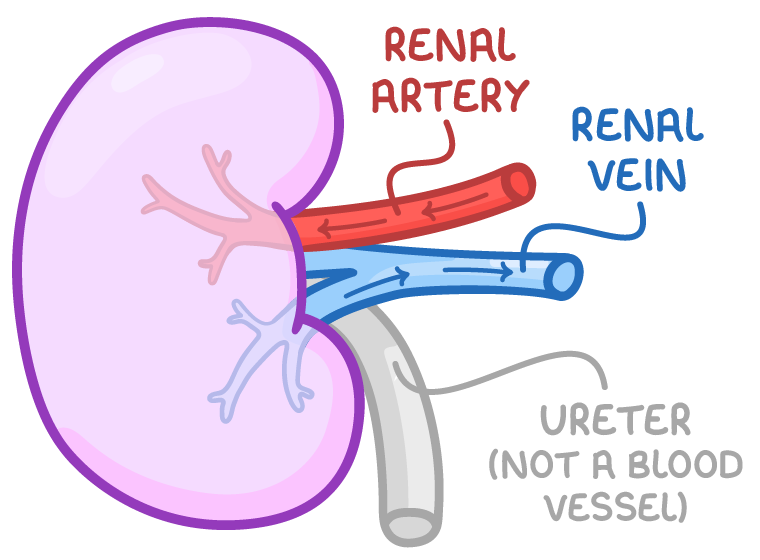
(you will often see the ureter on diagrams of the kidneys, but remember it is not a blood vessel) |
Blood supply to the liver
(you will often see the gall bladder and bile duct on diagrams of the liver, but remember they are not blood vessels)  |
Blood supply to the heart and lungs 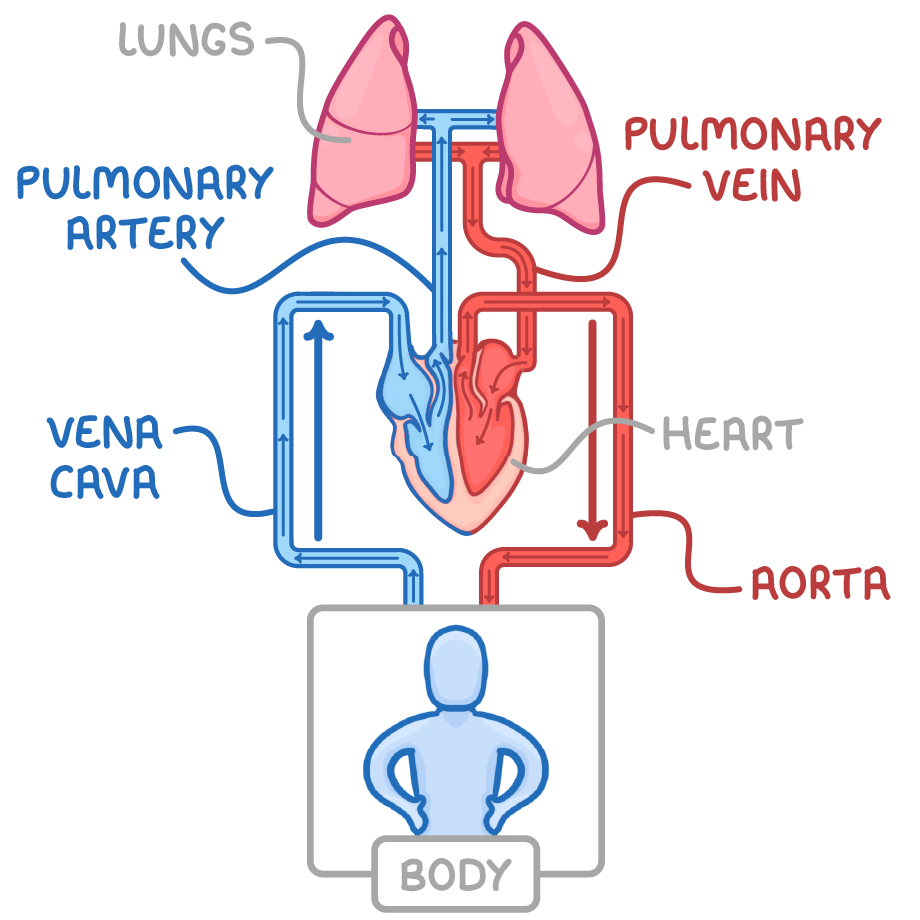
|
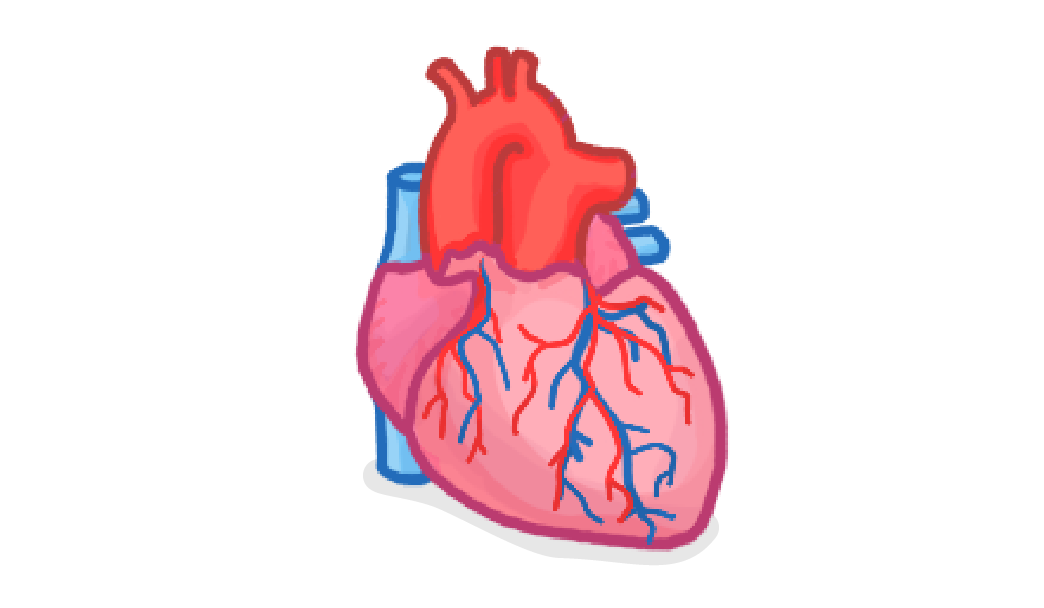
Arteries carry blood ___________ the heart.
towards
away from
|
nerves / arteries / capillaries / veins
carry blood through the body tissues, allowing oxygen, nutrients, and waste products, to be exchanged between tissues and the blood.
|
Veins carry blood ___________ the heart.
towards
away from
|
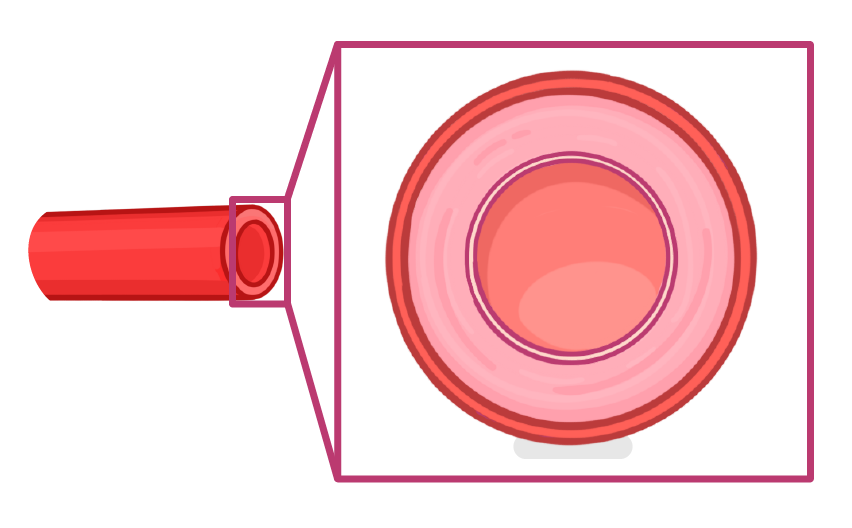
Structure and function of arteries
high / low / elastic / plastic / muscle / nerve / narrow / wide
- Arteries are large and carry blood at a very pressure.
- Artery walls have a thick middle layer, containing both muscle and tissue.
- The tissue provides strength, and allows the arteries to direct blood flow.
- The tissue allows the arteries to stretch and recoil.
- Compared to their walls, arteries have a relatively lumen, which keeps the blood pressure high.
|
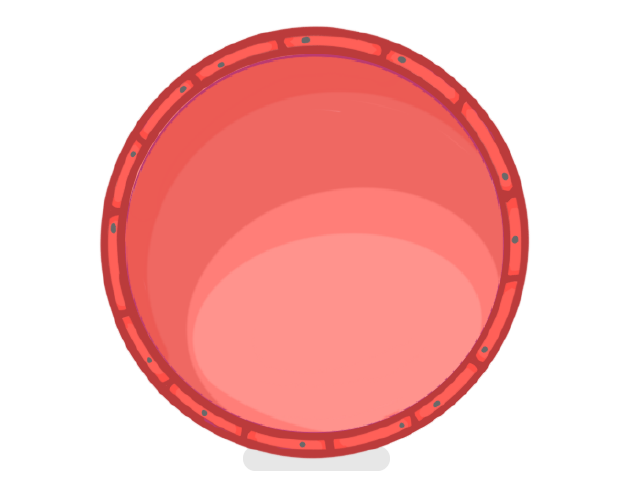
Structure and function of capillaries
high / low / waste / one / exchange / diffusion / permeable / wide
- Capillaries are the smallest of the three blood vessels.
- The role of capillaries is to nutrients and products with the tissues.
- Capillary walls are , meaning substances are able to move through them.
- Their walls are also only cell thick which means a short distance for .
- Capillaries carry blood at a pressure and have a lower rate of flow than arteries.
|
Which of the following substances are nutrients that are exchanged between the blood in the capillaries and the body tissues?
(Select all that apply)
Urea
Proteins
Amino acids
Carbon dioxide
Glucose
|
Which of the following substances are waste products that are exchanged between the blood in the capillaries, and the body tissues?
(Select all that apply)
Oxygen
Urea
Amino acids
Carbon dioxide
Glucose
Proteins
|
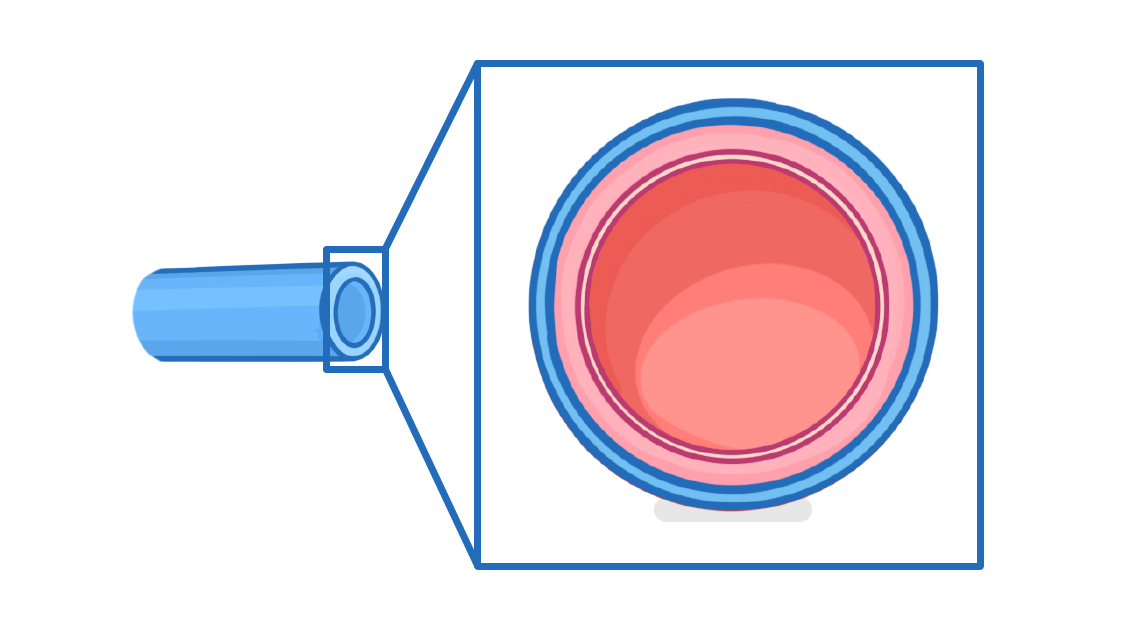
Structure and function of veins
higher / lower / thin / thick / heart / wide / small / valves
- The role of veins is to carry blood from the body (or lungs) back to the .
- Veins are a similar size to arteries, but they have relatively walls and a relatively lumen
- This is because they carry blood at a much pressure.
- Veins also contain to prevent the blood from flowing backwards.
|
Which of the following substances are exchanged between the blood in the capillaries, and the body tissues?
(Select all that apply)
Urea
Glucose
Proteins
Oxygen
Carbon dioxide
|
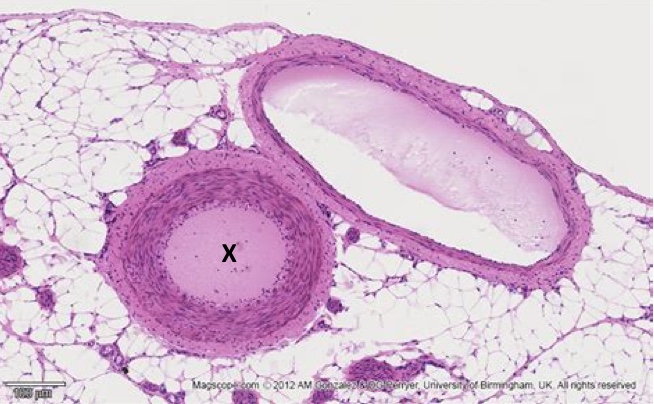
Which type of blood vessel is marked with an X?
Capillary
Vein
Artery
|
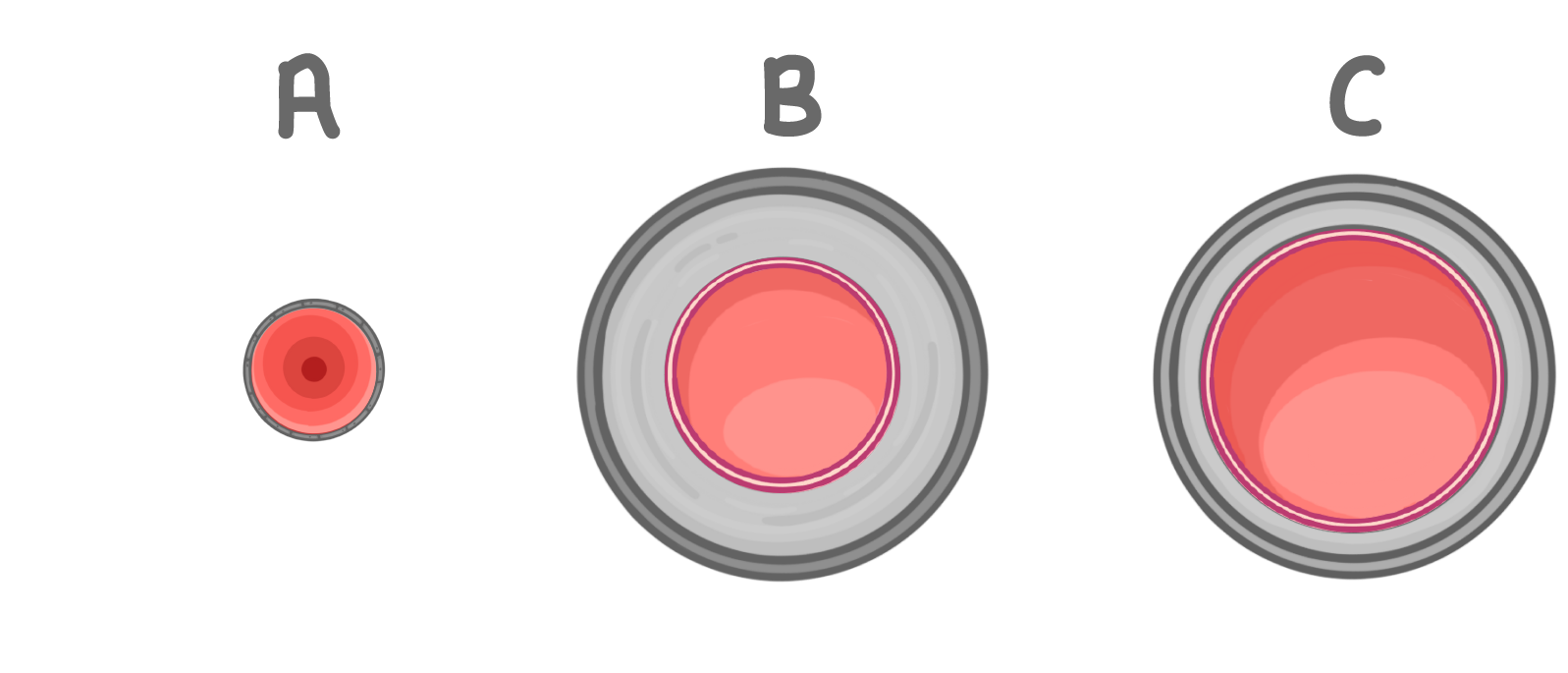
Based on the size of the lumen relative to the whole vessel, which of these blood vessels must be an artery?
A
B
C
|
1.4 litres of blood passes through an artery in 7 minutes.
What is the rate of blood flow in millilitres per minute?
ml/min
|
Blood is flowing through a vein at a rate of 37 ml/min.
How long will it take for 407 ml of blood flow through the vessel? Give your answer in minutes.
minutes
|
If you consider all the blood vessels inside of a human body, which type of blood vessel accounts for the majority of the cross-sectional area?
Capillaries
Veins
Arteries
|
In which order does blood flow through the three types of blood vessels?
Heart ➔ ➔ ➔ ➔ heart
|
What is the name of the organ supplied with blood by the hepatic portal vein?
Liver
Pancreas
Stomach
Small intestine
|
What is the name of the organ supplied with blood by the renal artery?
Pancreas
Bladder
Kidneys
Liver
|